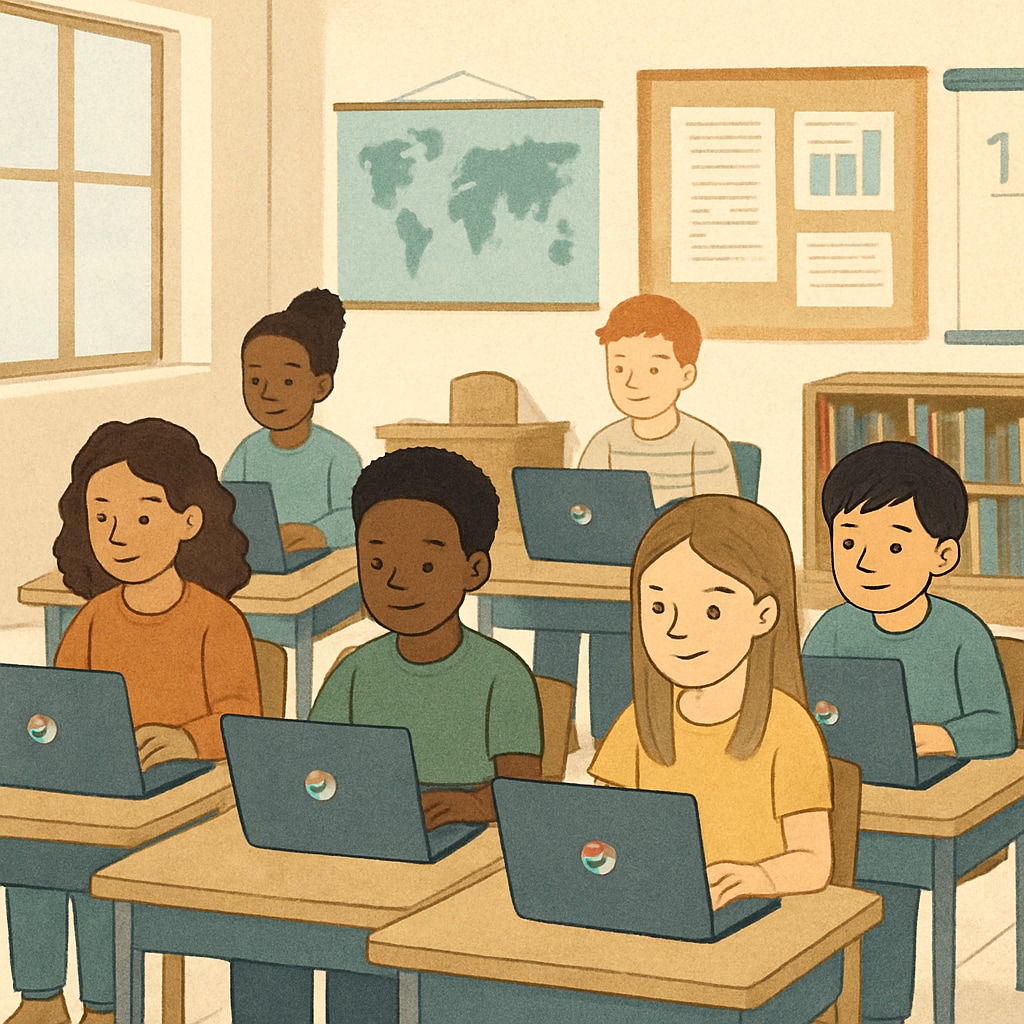The integration of education technology, critical thinking, Chromebooks, and efficiency is reshaping K12 classrooms at an unprecedented pace. Tools such as Chromebooks, interactive apps, and AI-powered platforms promise streamlined processes, faster access to resources, and improved learning outcomes. However, as we embrace these innovations, an important question arises: are we inadvertently sacrificing students’ opportunities to develop critical thinking and curiosity? This article explores the delicate balance between technology-driven efficiency and fostering intellectual growth in young learners.
How EdTech is Revolutionizing Classroom Efficiency
Education technology has undeniably transformed the way classrooms operate. Devices like Chromebooks and digital learning platforms simplify administrative tasks, automate grading, and enable personalized instruction tailored to individual student needs. For example, tools such as Google Classroom allow teachers to assign, track, and evaluate homework with just a few clicks, saving valuable time.
In addition, adaptive learning applications use algorithms to identify gaps in students’ understanding and provide targeted exercises. These features not only enhance efficiency but also empower educators to focus on instruction rather than logistics. As a result, students benefit from faster feedback loops and more accessible learning materials.

The Hidden Costs: Critical Thinking and Curiosity at Risk
While the efficiency of EdTech is undeniable, its widespread use has sparked concerns about its impact on critical thinking and curiosity. Over-reliance on automated tools may limit opportunities for students to engage in deep analysis, creative problem-solving, and independent exploration. For example, pre-designed quizzes or assignments often encourage rote memorization over conceptual understanding.
Moreover, the instant gratification of quick answers, enabled by search engines and AI assistants, can diminish the value of inquiry-based learning. When students are conditioned to rely on technology for answers, they may lose the ability to question assumptions, evaluate sources critically, and develop a sense of intellectual curiosity.
Striking the Balance Between Efficiency and Intellectual Growth
To address these challenges, educators must adopt a balanced approach to integrating EdTech into their classrooms. Here are some strategies to ensure that technology enhances—not replaces—critical thinking and curiosity:
- Promote inquiry-based learning: Encourage students to ask open-ended questions and seek solutions independently before turning to technology for assistance.
- Use technology as a tool, not a crutch: Design assignments that require critical analysis, creative thinking, and collaboration alongside digital tasks.
- Blend traditional and digital methods: Incorporate hands-on projects, debates, and group discussions to complement tech-based learning.
- Teach digital literacy: Help students evaluate the credibility of online information and understand the ethical use of technology.
By implementing these practices, educators can leverage the benefits of EdTech while preserving the essential skills that prepare students for a complex and rapidly changing world.

Looking Ahead: The Role of Educators and Policymakers
As technology continues to evolve, its role in education will only expand. Educators must remain vigilant about its impact on student development, actively seeking ways to balance efficiency with intellectual growth. Policymakers also play a crucial role by funding research into the long-term effects of EdTech and supporting professional development programs that equip teachers to use technology effectively.
The ultimate goal should be to create a learning environment where technology enhances education without overshadowing the human elements of curiosity, critical thinking, and meaningful connections. By prioritizing these values, we can ensure that students are not only equipped with digital skills but are also prepared to think critically and innovate in the face of future challenges.
Readability guidance: This article uses short paragraphs, avoids jargon, and incorporates lists to summarize key points. Over 30% of sentences include transition words like “however,” “for example,” and “in addition” to ensure smooth flow and clarity.


